All issues

Volume 32, Issue 1
Displaying 1-4 of 4 articles from this issue
- |<
- <
- 1
- >
- >|
-
Atsushi ISHIYAMA1997Volume 32Issue 1 Pages 1
Published: January 25, 1997
Released on J-STAGE: February 26, 2010
JOURNAL FREE ACCESSDownload PDF (212K) -
Sang-Soo OH, Kang-Sik RYU1997Volume 32Issue 1 Pages 2-9
Published: January 25, 1997
Released on J-STAGE: February 26, 2010
JOURNAL FREE ACCESSSuperconductivity research in Korea started in 1984, and the number of research groups engaged in high-Tc superconductor has greatly increased since 1986. Although superconductivity research has a short history, many attempts have been made to develop low-Tc superconducting machines and high-Tc superconducting devices. KERI has developed fabrication technology for superconducting wires and magnets since 1992. Accordingly, an active shielding-type MRI superconducting magnet was fabricated at 1996 and through collaboration with industry, KERI has attempted to produce 24 NbTi filament superconducting wires since 1992. EESRI and KEPCO developed a 0.5MJ SMES system and successfully conducted an energy transfer test between two NbTi coils in 1993. A superconducting current limiter has been under research at Yonse University since 1993. They manufactured a 220V/100A class superconducting current limiter in 1995 and have investigated applicability to power systems. On the other hand, the High-Temperature Superconductivity Research Association (HiTeSRA) was organized to promote the research of high-temperature superconductivity, and has taken the lead in the research activities for high-temperature superconductivity. KRISS and LG Electronics developed a directly coupled SQUID with single-layer YBCO thin film and successfully demonstrated MCG measurement using high-Tc SQUID magnetometers in 1996. ETRI has developed microwave superconducting coupled-line bandpass filters using YBCO thin film fabricated by laser ablation. Since 1995, a project for the development of a superconducting nuclear fusion device has been in progress. Such developments have led Korea to enter a new phase in the research of applied superconductivity.View full abstractDownload PDF (2323K) -
Takashi HASE, Kazuyuki SHIBUTANI, Seiji HAYASHI, Masao SHIMADA, Rikuo ...1997Volume 32Issue 1 Pages 10-17
Published: January 25, 1997
Released on J-STAGE: February 26, 2010
JOURNAL FREE ACCESSA cryocooler-cooled Bi-2212 superconducting magnet with a practical size of room temperature (RT) bore has generated static and alternating magnetic fields. The magnet has generated static magnetic fields up to 1.02T in the RT bore continuously for more than 30min. The alternating magnetic fields with frequencies up to 0.5Hz have been generated for 2h. As the typical results, the alternating magnetic fields with the peak magnetic fields, which are equal to twice as large as the respective magnetic field amplitudes, of 0.65 and 1.00T have been stably generated with frequencies up to 0.5 and 0.025Hz, respectively.View full abstractDownload PDF (2223K) -
Rui WANG, Yasuhide SHINDO, Katsumi HORIGUCHI, Kazuaki SANADA1997Volume 32Issue 1 Pages 18-24
Published: January 25, 1997
Released on J-STAGE: February 26, 2010
JOURNAL FREE ACCESSWe discuss the interlaminar shear behavior of G-10CR glass-cloth/epoxy laminates following a cryomechanics approach. Interlaminar shear tests were carried out with double-notch shear specimens at room temperature, 77K and 4K to evaluate the interlaminar shear strength (ILSS) of G-10CR glass-cloth/epoxy laminates. The double-notch shear specimen was loaded on its ends in compression with a supporting jig to prevent buckling. These tests were conducted in accordance with ASTM D3846-79. The effects of temperature, specimen thickness and notch separation on ILSS are shown graphically. Fracture surfaces were examined by scanning electron microscopy (SEM) and optical microscopy to verify the failure mechanisms. A two-dimensional finite element analysis was also performed to investigate the effect of specimen thickness and notch separation on the shear stress distribution in the expected fracture plane and the interlaminar shear strength. The numerical findings are then correlated with the experimental results.View full abstractDownload PDF (2694K)
- |<
- <
- 1
- >
- >|